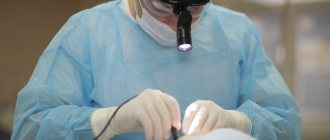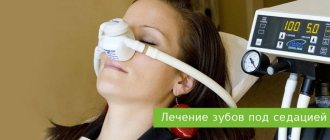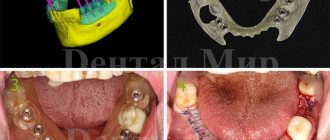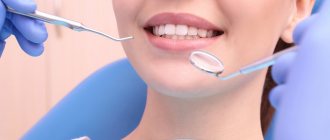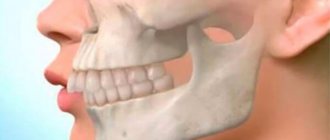* The price of endotracheal anesthesia is included in the cost of the operation
Some general information about anesthesia methods. Anesthesia can be local or general. Local anesthesia is used for minor surgical procedures. For example, when removing papillomas, wen and moles, or when reinforcing the face. With local anesthesia, the patient is conscious, but the operation area completely loses sensitivity.
General anesthesia is necessary for long and complex operations. During general anesthesia, the patient is immersed in a state of drug-induced sleep, and vital functions - breathing, cardiac activity - are controlled by an anesthesiologist. Anesthesia is always general anesthesia. The terms “local anesthesia” or “general anesthesia” are meaningless, although they can sometimes be found in publications and in everyday speech.
What is endotracheal anesthesia?
There are two types of general anesthesia - intravenous and inhalation anesthesia. In the first case, medications that put a person to sleep are administered intravenously by the anesthesiologist. During inhalation anesthesia, drugs enter the body with inhaled air in gaseous form.
Inhalation anesthesia can be performed using a mask or intubation technique. The mask technique involves the supply of oxygen and anesthesia drugs through a special mask and does not require insertion of a breathing tube into the trachea. With the intubation technique, a tube is inserted into the trachea, through which oxygen and anesthetic substances are supplied, and carbon dioxide is removed.
Endotracheal anesthesia is a technique of inhalation anesthesia, a variant of general anesthesia, in which during surgery the supply of medications and external breathing are carried out through a special tube inserted into the upper respiratory tract, that is, into the trachea.
Combined endotracheal anesthesia is a separate method of general anesthesia, in which anesthesia drugs are administered both intravenously and through the respiratory tract. In other words, it is a combination of intravenous and inhalational anesthesia.
Indications for tonsillectomy
The main indications for tonsil removal are:
- Frequent exacerbations of chronic tonsillitis (more than twice a year)
- Purulent complications (peritonsillar abscess, neck phlegmon)
- Development of complications - rheumatism, heart disease, kidney disease, nervous system disease, skin disease
- Severe hypertrophy of the palatine tonsils, which can interfere with the normal act of swallowing, and also lead to severe snoring and periodic episodes of breathing apnea during sleep (obstructive apnea syndrome)
- Ineffectiveness of conservative treatment of chronic tonsillitis, carried out in a complex of 2-3 courses
- Neoplasms of the palatine tonsil
Tonsillectomy is performed during the period of remission of the inflammatory process, that is, without an exacerbation of chronic tonsillitis.
If a complication such as a peritonsillar abscess develops, the removal of the tonsils is carried out simultaneously with the opening and drainage of the purulent focus. This operation is called abscessonzollectomy.
How is endotracheal anesthesia performed?
Preparation for surgery consists of several stages. The preparatory stage is premedication. Before surgery, the patient is given sedatives - tranquilizers, drugs with anxiolytic effect. Taking sleeping pills the evening before surgery is also part of the preparatory phase. Thanks to premedication, a person approaches surgery in a calm and balanced state.
Immediately before the operation, induction anesthesia is performed - intravenous administration of sedatives, which ensures smooth falling asleep before intubation begins. The next stage is muscle relaxation. When the patient falls asleep, he is given a small dose of muscle relaxants - drugs that help relax the muscles. Thanks to muscle relaxants, the tone of the laryngeal muscles is reduced and optimal conditions are created for the insertion of an endotracheal tube.
The fourth stage is the direct insertion of the endotracheal tube and its connection to the ventilator. At this stage, the patient is already sleeping and dreaming, and nothing bothers him.
Advantages of endotracheal anesthesia
Maximum safety and complete control over the depth of drug-induced sleep are the main advantages of endotracheal anesthesia. The risk of “waking up during surgery” is eliminated, as is the slightest possibility of disruption of the respiratory and cardiovascular systems. In other words, this is the safest and most reliable type of general anesthesia, during which the anesthesiologist has everything under control!
The advantages of endotracheal anesthesia are explained by the fact that, thanks to intubation, continuous monitoring of respiratory function is carried out. The anesthesiologist constantly monitors adequate ventilation of the lungs, accurately doses the amount of oxygen entering the lungs, and carefully controls the carbon dioxide content in the exhaled air.
From a safety point of view, one more point is important - the risk of tongue retraction, which is present with intravenous and mask anesthesia techniques, is eliminated. In addition, the endotracheal tube completely isolates the respiratory tract from the esophagus, which eliminates the possibility of saliva and stomach contents entering the pulmonary system.
Other features and advantages of endotracheal anesthesia are the possibility of active use of muscle relaxants, the possibility of performing long-term operations with artificial ventilation, and minimizing the risk of postoperative complications from the respiratory and cardiovascular systems.
Endotracheal anesthesia - indications
In plastic surgery, endotracheal anesthesia is used for many operations.
Examples include rhinoplasty, augmentation mammoplasty, abdominoplasty, mastopexy, circumferential facelift and SMAS platysmaplasty. Liposuction can also be performed using an intubation technique, although local anesthesia may be chosen for smaller cases. Endotracheal anesthesia is indicated for all long-term operations accompanied by a violation of the integrity of deep tissues, not only the skin. This is how a general rule can be formulated. Minor surgical interventions are often performed under local anesthesia. Examples are otoplasty for protruding ears, bullhorn (a type of lip surgery) or lipoma removal.
After endotracheal anesthesia
The final stage of general anesthesia is the removal of the patient from the state of drug-induced sleep. After endotracheal anesthesia, some confusion is observed, which is explained by the residual effect of sedatives on the central nervous system. Possible headaches, mild dizziness and nausea are associated with this. However, the features of modern anesthesia drugs are such that while the patient may be bothered by their residual effect, he is in a state that resembles euphoria. And when the euphoria wears off, the “echoes” of anesthesia also disappear.
A specific phenomenon after endotracheal anesthesia is a slight sore throat, sore throat, and possibly a cough. These consequences are explained by the fact that the endotracheal tube irritates the mucous membrane of the larynx and trachea. As a rule, the discomfort goes away within a day.
Postoperative period
Nose pain
Often in the postoperative period, patients experience pain in the nose. This is due both to the surgical procedure itself and to the presence of tampons in the nose. If the pain is severe, the doctor may prescribe opioid-containing narcotic painkillers such as tramadol, promedol. Most often, patients themselves refuse opioid analgesics. In this case, doctors use non-steroidal anti-inflammatory drugs: ketorol, diclofenac, analgin. However, a contraindication to these drugs is the deterioration of blood clotting and an increased risk of postoperative bleeding, so doctors do not recommend using these drugs frequently, especially in the first days after surgery.
To reduce pain after septoplasty, it is recommended to raise the head of the bed if the patient is undergoing rehabilitation in a hospital. At home, you need to lie with your head elevated, using 2-3 pillows. It is also recommended to apply ice to the bridge of the nose and forehead for 5-10 minutes 2-3 times a day.
In the postoperative period, you should not touch your nose, especially avoid pressing on the tip of the nose. This can cause severe pain and will cause poor tissue healing in the surgical area. Also, trauma to the nose after septoplasty often causes a shift of the nasal septum to the side.
Antibiotics
During the rehabilitation period, antibiotics are prescribed to reduce the risk of infection. Usually these are penicillin antibiotics. It is necessary to strictly adhere to the duration and dose of antibiotics prescribed by the doctor.
Vasoconstrictors and nasal douche
The next day after removing the tampons, you will need to use vasoconstrictor nasal drops, for example, xylometazoline, Nazivin and saline solutions for the nose (Aqua-Lor, Dolphin). Vasoconstrictors are prescribed to reduce swelling in the nose and widen the nasal passages. This improves nasal patency during nasal shower with saline solutions. Saline solutions wash away mucus, congealed blood, and crusts from the nose, speeding up recovery. On average, vasoconstrictor drops and nasal douche are prescribed for 5-7 days.
General recommendations for the patient during the postoperative period
The postoperative period lasts for 3 weeks after surgery. At this time, the main thing is to speed up the metabolism in the body, which will speed up recovery. To do this, the patient is prescribed to drink plenty of fluids - up to 3 liters of fluid per day, and moderate walking - 3-4 hours during the day. However, you should not engage in physical exercise or strain yourself - physical activity is contraindicated during the entire rehabilitation period.
Complications of endotracheal anesthesia
Any surgical intervention is associated with the risk of postoperative complications. The goal of using endotracheal anesthesia is to minimize this risk. Thanks to the intubation technique for administering medications, the risk of aspiration of gastric contents into the lungs is reduced, the risk of respiratory tract infection, and the risk of respiratory or cardiovascular failure is minimized.
Complications of endotracheal anesthesia, that is, complications caused by the insertion of an endotracheal tube, are extremely rare. These include injuries to the tongue or larynx, which occur during intubation “on the go” before urgent (urgent) operations. During planned surgical interventions, which include all plastic surgeries, there are no complications of endotracheal anesthesia.
Managing swallowing problems
Having trouble swallowing is called dysphagia. Your healthcare team can help you manage your dysphagia. Your team includes doctors, nurses, a swallowing specialist, and a clinical dietitian.
You will meet with a swallowing specialist before, during, and after treatment. This specialist:
- explain how treatment may affect swallowing;
- will teach you how to perform exercises to stretch and strengthen the muscles involved in swallowing;
- will monitor any changes in your ability to swallow as you progress through radiotherapy;
- will help you maintain your ability to swallow after treatment ends to prevent long-term or delayed changes.
Pain when swallowing
If you have pain when swallowing, your healthcare team will give you pain medicine to help you manage the pain. Follow your doctor's directions for taking your medication. If it doesn't help, tell your doctor or nurse. There are a wide variety of medications that can be used to relieve this type of pain.
Aspiration
If you have trouble swallowing, food or liquid may accumulate in the back of your throat. This increases the risk of aspiration. Signs of aspiration include:
- cough when swallowing;
- cough after swallowing;
- change in voice while eating or drinking.
If any of these signs occur, contact your swallowing specialist immediately. This specialist will assess whether your ability to swallow has changed and may recommend foods and drinks that are safe to swallow. You will also be given help with swallowing exercises to help prevent your ability to swallow from getting worse.
Call your doctor or nurse right away if you have any of the following symptoms:
- dyspnea;
- whistling when breathing;
- pain when breathing;
- cough with phlegm or mucus;
- temperature 100.4°F (38°C) or higher.
These may be signs of developing pneumonia or a respiratory infection.
Lockjaw
Trismus is a condition where you cannot open your mouth as wide as usual. Trismus can occur at any time, immediately after or even years after treatment.
If you cannot open your mouth wide enough, it will be difficult for your doctor to examine your mouth. This may also be due to other problems, for example:
- Irrigating the mouth and brushing teeth (oral hygiene), which can lead to bad breath, tooth decay and oral infections;
- chewing and swallowing, which may make it difficult for you to eat and drink;
- speech;
- kisses;
- insertion of a breathing tube, for example if you ever need general anesthesia (a drug given to keep you asleep during an operation or procedure);
- carrying out routine dental treatment.
When trismus occurs, its treatment is very difficult. This is why it is important to prevent trismus and treat the condition as early as possible. Your swallowing specialist will teach you exercises to help prevent trismus. It is also important to maintain good oral hygiene and good posture.
to come back to the beginning
Endotracheal anesthesia - contraindications
Endotracheal anesthesia has become very widely used in all branches of surgery, largely due to the fact that it has practically no contraindications. Intubation technology allows for complete control of vital functions; it can even be used to perform 16-hour heart surgeries.
In the context of plastic surgery, endotracheal anesthesia has no contraindications. Why? Because intubation cannot be used only for certain conditions in which any operation not related to the elimination of an immediate threat to life is contraindicated. For example, endotracheal anesthesia is contraindicated in case of myocardial infarction or pneumonia, but no one would even think of undergoing plastic surgery.
To learn more about the anesthetic techniques used for a particular plastic surgery procedure, book a free consultation with a Soho Clinic surgeon.
What to do after tooth extraction
After the dentist has completed all removal procedures, the patient must take the following measures:
- The tampon that the doctor placed on the hole must be removed no later than half an hour later. If the patient has poor blood clotting, you can keep the compression pad on for 60 minutes;
- To reduce the likelihood of swelling of the soft tissues of the mouth or face, it is advisable to apply something cold to the cheek. This treatment measure will be effective only in the first hours after surgery. A piece of ice or frozen meat wrapped in cloth should be applied to the cheek several times for 5 minutes;
- On the first day, to avoid inflammation, you can do antiseptic baths;
- It is necessary to gently, carefully, but carefully carry out all hygiene procedures in the oral cavity, not excluding the area where the tooth was pulled out.
Compliance with these rules after removal will promote rapid healing of the hole and prevent infection.
